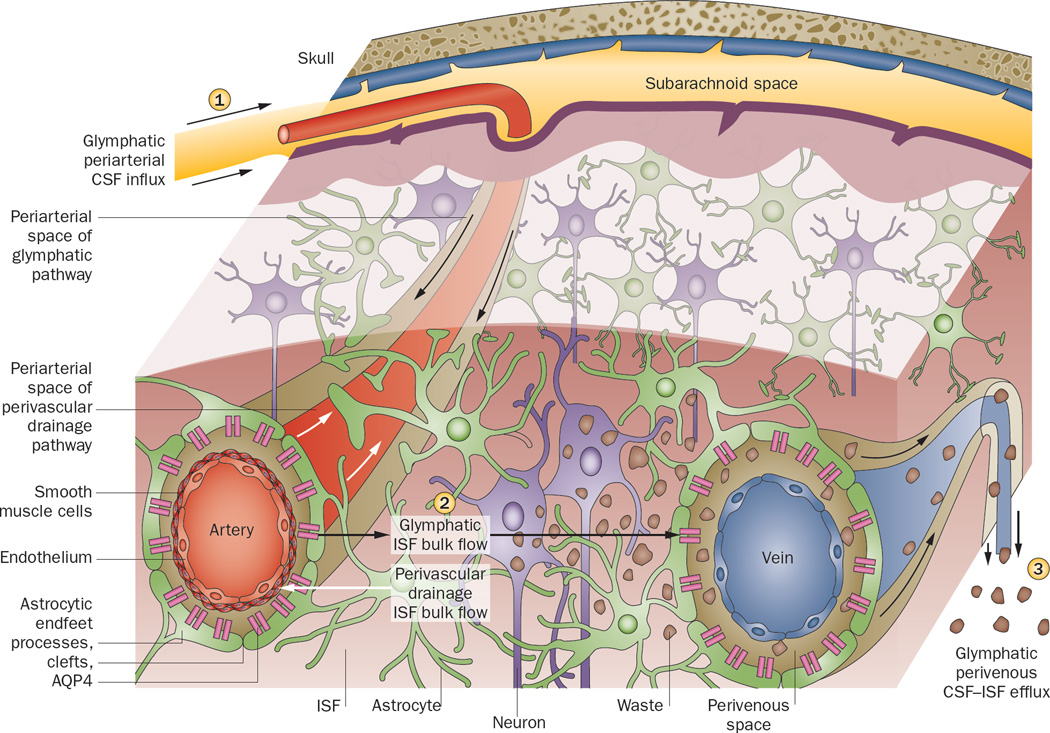Figure 1.
Perivascular clearance comprises perivascular drainage and glymphatic pathways. The perivascular drainage Nature Reviews | Neurology pathway (white arrows) moves waste into the periarterial space (located along smooth muscle cells and the capillary basement membrane) and towards the subarachnoid space in the direction opposite to blood flow. The glymphatic pathway (black arrows) clears waste from the ISF through the brain parenchyma, and comprises three functional components. (1) CSF influx, unidirectionally with blood flow, into the periarterial space (between the basement membrane of smooth muscle cells and pia mater), where the water component of CSF crosses astrocytic AQP4 channels to enter the brain parenchyma. CSF solutes can be cleared with astroglial transporters or channels, or can pass through the astrocytic endfeet clefts. (2) CSF–ISF exchange within the brain parenchyma. (3) CSF–ISF movement into the perivenous space of deep-draining veins. Effluxed waste can then recirculate with the CSF, or eventually be absorbed into the lymphatic system. Arrows indicate direction of flow. Abbreviations: AQP4, aquaporin-4; CSF, cerebrospinal fluid; ISF, interstitial fluid. Permission obtained from Cell Press © Nedergaard, M. Science 340, 1529–1530 (2013).

